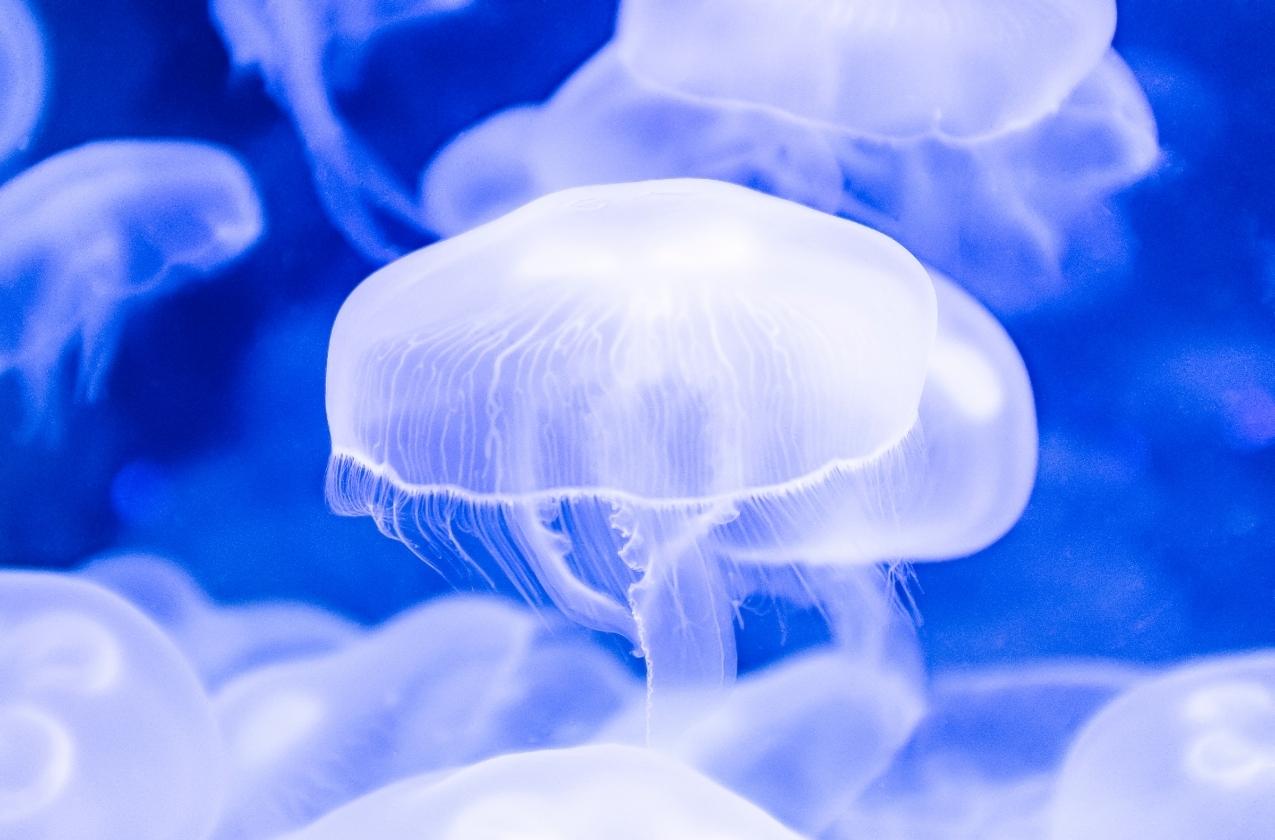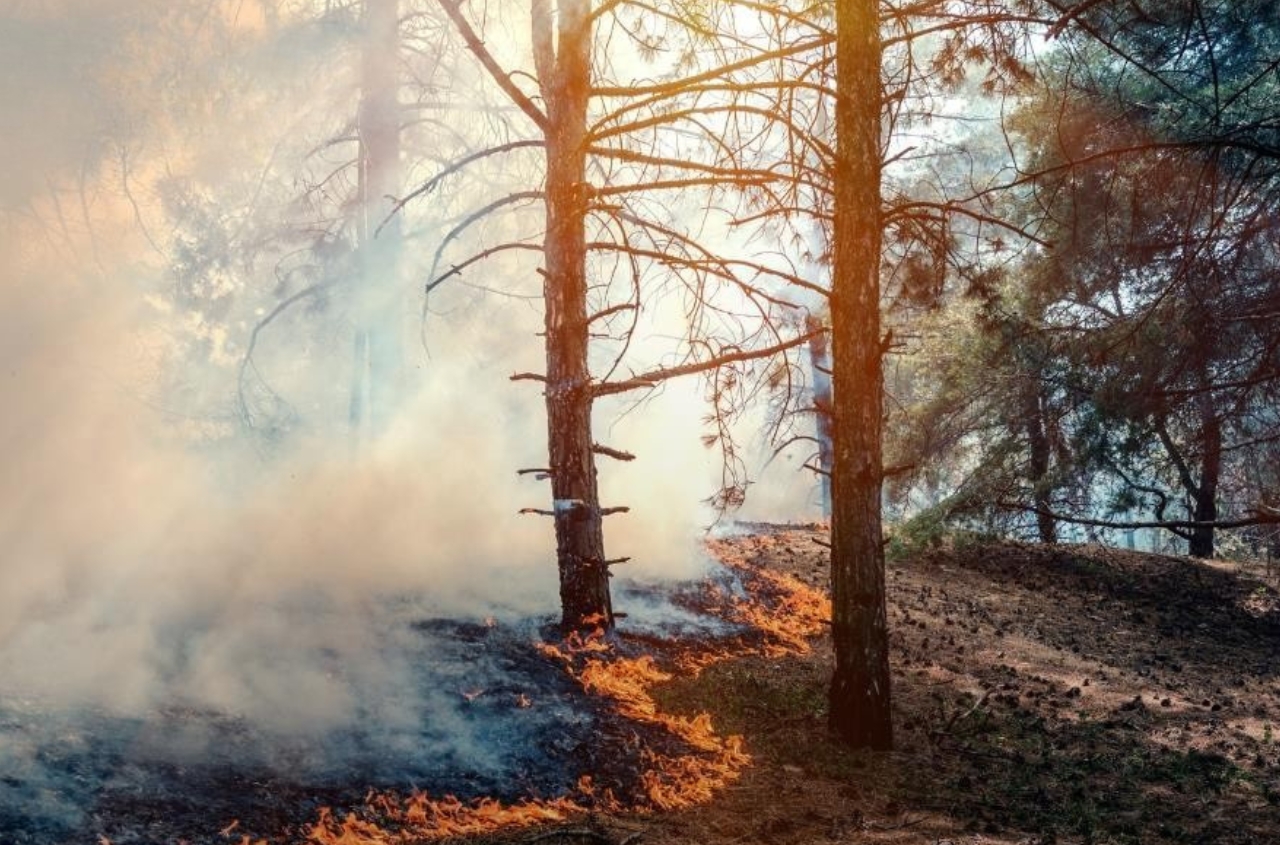There are 30 jellyfish species in the Black Sea, the majority of which (26 species) are small - not more than 1-20mm in diameter. The large ones are common jellyfish or moon jellyfish (Aurelia aurita) – up to20 cm in diameter, barrel jellyfish (Rhizostoma pulmo) – up to 60cm in diameter, and the very rare lucernaria (Calvadosia campanulata). In 2009, compass jellyfish (Chrysaora hysoscella) from the Mediterranean were found for the first time in the Black Sea, not far from the Turkish coast. This nettle-fish if touched leaves red marks on human skin resembling chemical burns. Moon jellyfish sometimes leave light burns, which pass in an hour or so, and bigger barrel jellyfish can very painfully damage skin, though the burns generally disappear in a few days.
Jellyfish are mainly predators eating small planktonic animals. They grasp food with their mouths, which also serve to discharge food remains. The manubrium also has gonads attached to it. They produce reproductive cells, which are directly involved in the breeding process.
The majority of jellyfish species are characterised by alternating sexual and asexual reproduction. The full-grown jellyfish are diclinous animals (i.e. they reproduce sexually). Their fertilisation is represented by a merging of cells moving actively in water, forming planula larvae. These larvae swim in water columns and then attach to solid surfaces on the seafloor. There they transform into polyps (part of asexual reproduction) following a sedentary lifestyle and increasing in number via gemmation. Polyps grow, divide, and form strobils – piles of ‘plates’ (young jellyfish arranged such that the concave sides of their pilei point upwards) connected by central trunk. The interesting thing is that the less frequent sexual reproduction is, the more frequent asexual reproduction becomes. Polyps of moon and barrel jellyfish are only about 2cm high, whilst polyp thickets of more wide-spread Black Sea nettle-fish, e.g. obelia (Obelia longissima) reach 30cm in height and more closely resemble discoloured algae than animals. For example, the diameter of obelia jellyfish’s umbrella-shaped bell is only 4mm, rendering them almost invisible in water columns. The reproduction alternation cycle repeats annually. It is likely that jellyfish reproduction follows similar patterns as outbreaks, as their quantity depends on living conditions either at the seafloor or within water columns.

The most significant surges in barrel jellyfish populations were observed in the 1970s; moon jellyfish populations similarly surged in the 1980s. The phenomenon was explained by so-called anthropogenic eutrophication – the increase of organic matter concentrations in water. At the end of the 1980s, moon jellyfish stocks in the Black Sea reached a mass of 300-500 million tonnes. Casting about for a solution included various ideas for decreasing jellyfish numbers. Among them, using nettle-fish in heavy-duty concrete production and practicing reinforced metal welding with the help of dried jellyfish powder. However, the Black Sea ecosystem soon stabilised and jellies ‘retreated’. People living around the Black Sea didn’t previously consider nettle-fish to be a foodstuff, although moon and barrel jellyfish are traditional in Asian cuisines, where they are semi-romantically referred to as ‘crystal meat’. They are usually pickled, fried, dried, and conserved. Nowadays the annual harvest of jellyfish is estimated to be around 250,000 tonnes.
The publication was prepared with the financial support of the EU – UNDP project ‘Improving Environmental Monitoring in the Black Sea: Selected measures’ (EMBLAS-Plus). This publication was produced with the financial support of the European Union and UNDP. Its contents are the sole responsibility of the authors and do not necessarily reflect the views of the European Union or UNDP.
Authors: B. Aleksandrov, O. Adrianova, N. Atamas, V. Bolshakov, O. Bondarenko, I. Chernichko, V. Demchenko, S. Dyatlov, Y. Dykhanov, E. Dykyi, O. Garkusha, P. Gol’din, S. Hutornoy, V. Komorin, Y. Kvach, V. Mamaev, O. Manturova, O. Marushevska, A. Mikelyan, Yu. Mikhalev, G. Minicheva, I. Sinegub, T. Shiganova, J. Slobodnik, A. Snigiryova, M. Son, K. Vishnyakova, A. Zotov. Illustrator: I. Pustovar.






















